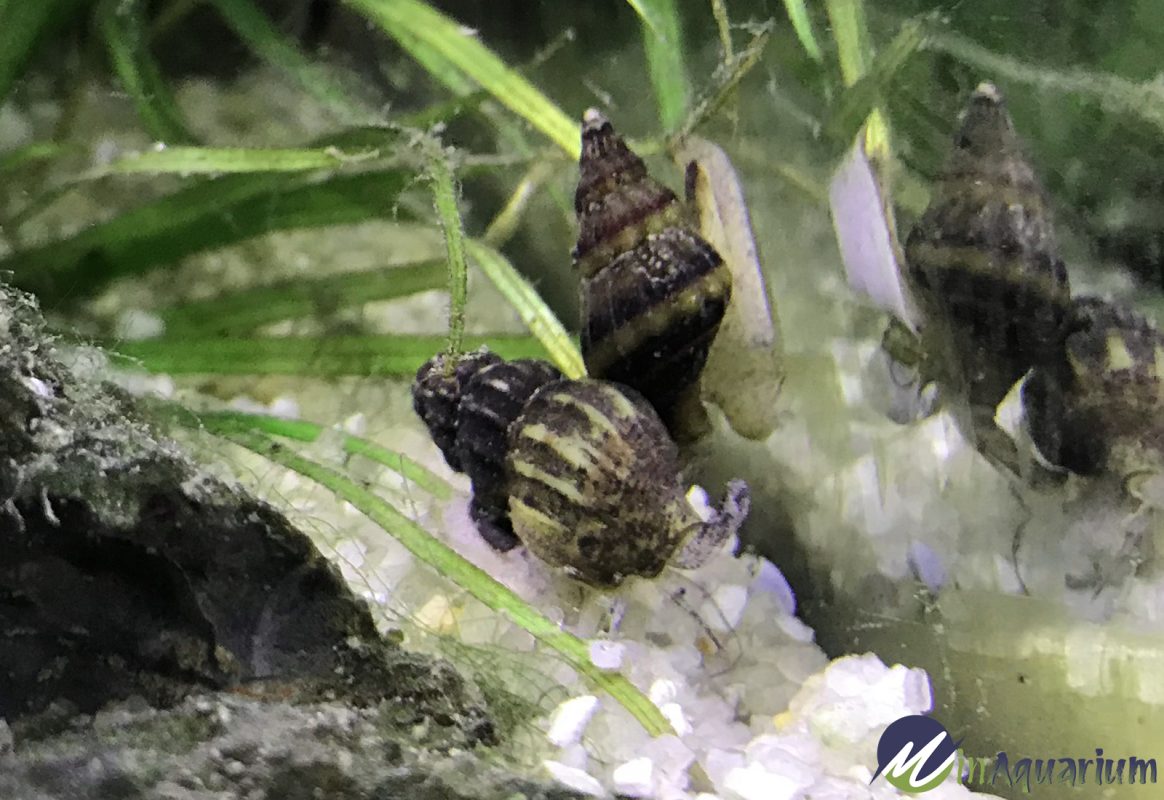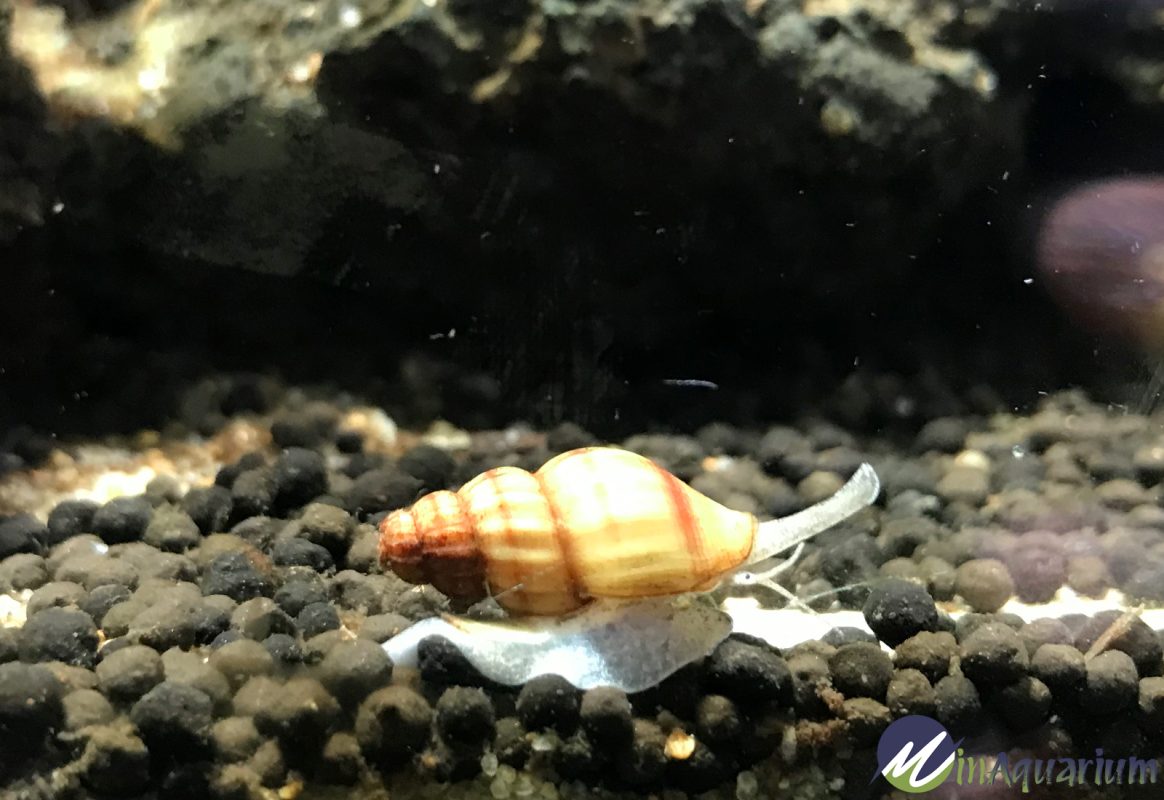Blogs
Assassin Snails (Clea helena): A Comprehensive Guide to Controlling Pest Snails in Aquariums
Assassin snails, scientifically known as Clea helena, are highly sought after in the aquarium hobby for their exceptional ability to control and eliminate unwanted pest snails. Their voracious appetite for snails makes them a formidable foe for problematic snail infestations, offering an eco-friendly and effective solution. This guide delves into the world of assassin snails, exploring their behavior, care requirements, and benefits in maintaining a healthy aquarium ecosystem.
Appearance and Identification
Assassin snails are visually distinctive with their striking yellow and black or dark brown stripes. Their spiral-shaped shells and iridescent, almost translucent white bodies make them an attractive addition to aquariums, complementing both light and dark-colored substrates. Their average size ranges from 1 to 2 inches, with females typically larger than males.

Size and Shape
Assassin snails exhibit a variable size range, with females reaching a maximum length of 2 inches while males are generally smaller, measuring around 1 inch. Their unique spiral-shaped shells are adorned with distinct black or dark brown stripes on a yellow background, creating a distinctive pattern.
Coloration and Markings
The vibrant yellow and black or dark brown stripes of assassin snails are not only aesthetically pleasing but also serve as a warning to potential predators. Their contrasting colors make them easily recognizable in aquarium environments.
Sensory Adaptations
Assassin snails possess well-developed sensory organs that enable them to navigate their surroundings effectively. Their long tentacles house chemoreceptors that detect chemical cues from potential prey, while their eyes provide them with visual acuity.
Locomotion and Burrowing
Assassin snails move with a graceful gliding motion, using their muscular foot to propel themselves through the water or across surfaces. They also have the ability to burrow into the substrate, seeking shelter or pursuing prey hidden beneath the sand.
Diet and Feeding Habits
Assassin snails are obligate carnivores, primarily feeding on other snails, making them an effective means of controlling pest snail populations in aquariums. Their diet consists of various types of snails, including pond snails, Malaysian trumpet snails, ramshorn snails, and bladder snails.
Predatory Nature and Snail Population Control
Assassin snails actively hunt and consume other snails, playing a crucial role in managing and reducing snail infestations. Their voracious appetite helps maintain a balanced snail population in the aquarium, preventing uncontrolled growth that can disrupt the ecosystem.
Supplemental Diet
In the absence of sufficient snails for sustenance, assassin snails can be offered supplemental food sources, such as fish flakes, blood worms, and other meaty foods. Providing a diverse diet ensures their nutritional needs are met.
Feeding Frequency and Amount
Assassin snails are not regular feeders and do not require daily feeding. Their opportunistic feeding behavior allows them to hunt and consume snails whenever they encounter them. However, if supplemental feeding is necessary, small amounts should be offered once or twice a week.
Prey Detection and Capture
Assassin snails employ various techniques to locate and capture their prey. They use their chemoreceptors to detect the presence of other snails and then pursue them using their muscular foot. Once they come into contact with a snail, they use their radula, a rasp-like tongue, to pierce the snail’s shell and feed on its soft tissues.
Care Requirements
Providing an optimal environment for assassin snails is essential for their well-being and longevity. They thrive in aquariums that replicate their natural habitat, ensuring they have access to appropriate food sources, substrate for burrowing, and suitable water parameters.
Diet and Nutrition
Assassin snails require a carnivorous diet, primarily consisting of other snails. Providing them with a constant supply of pest snails is the ideal food source. However, supplemental feeding of fish flakes, blood worms, and meaty foods can be necessary if the aquarium lacks sufficient snail populations.
Substrate and Shelter
Assassin snails require a suitable substrate that allows them to burrow and hide. Sand is a popular choice as it mimics their natural habitat and provides a soft and pliable medium for them to dig in. Providing rocks, driftwood, or artificial caves also creates additional hiding places for the snails.
Water Parameters
Assassin snails prefer a water temperature range between 68° to 75° F (20° to 24° C) and a pH level between 6
FAQs:
- Can assassin snails eliminate all pest snails? Assassin snails can significantly reduce pest snail populations, but complete elimination may not be possible, especially in heavily infested aquariums.
- How many assassin snails are recommended for a 10-gallon aquarium? A group of 5-6 assassin snails is generally sufficient for a 10-gallon aquarium.
- Can assassin snails harm fish? No, assassin snails do not harm healthy fish. However, they may prey on sick or dying fish.
- What is the ideal pH range for assassin snails? Assassin snails thrive in a pH range of to 8.0.
- How do assassin snails reproduce? Assassin snails reproduce sexually by laying clusters of eggs that hatch into veliger larvae, which eventually develop into juvenile snails.
- Can assassin snails be kept with live plants? Yes, assassin snails generally do not harm live plants.

